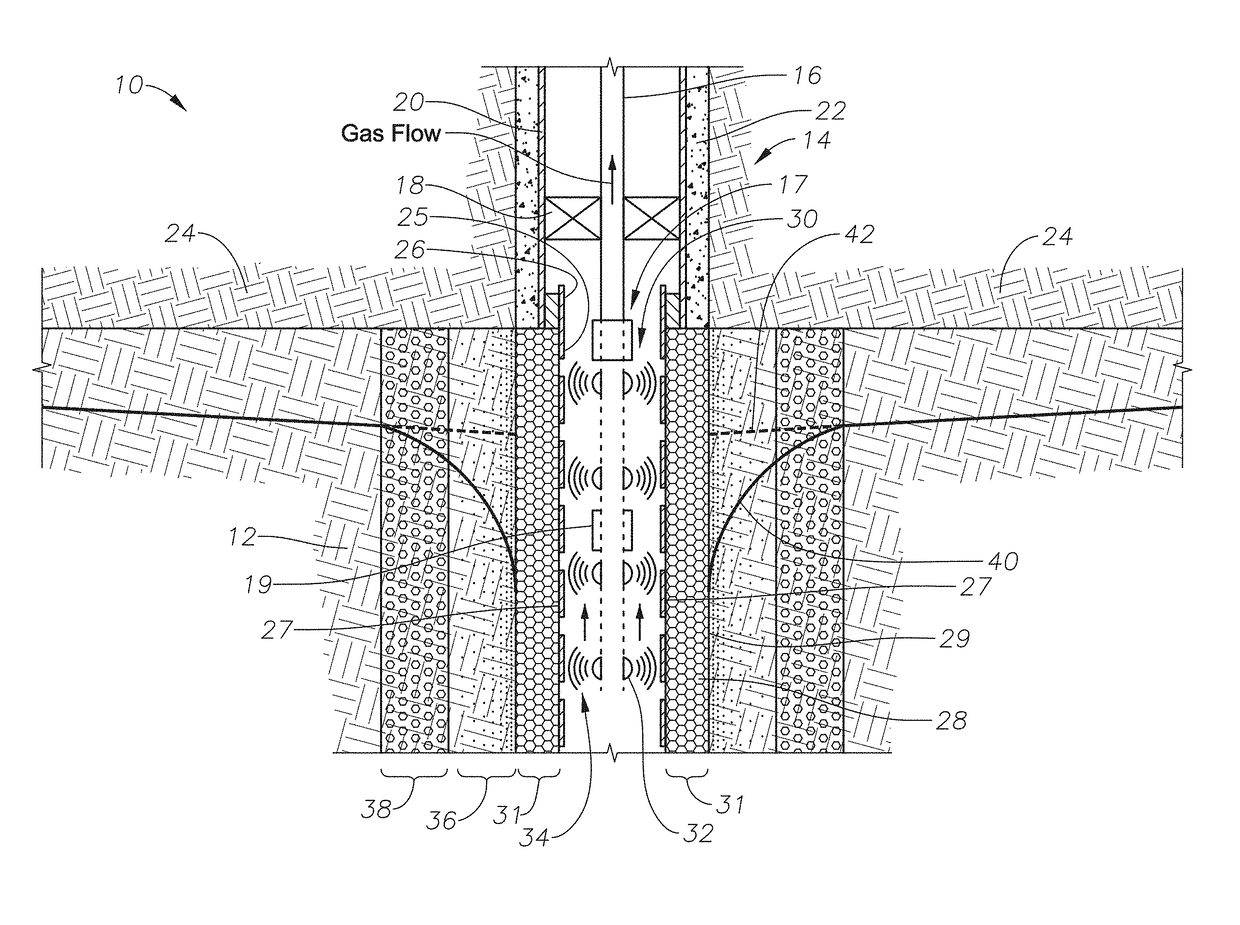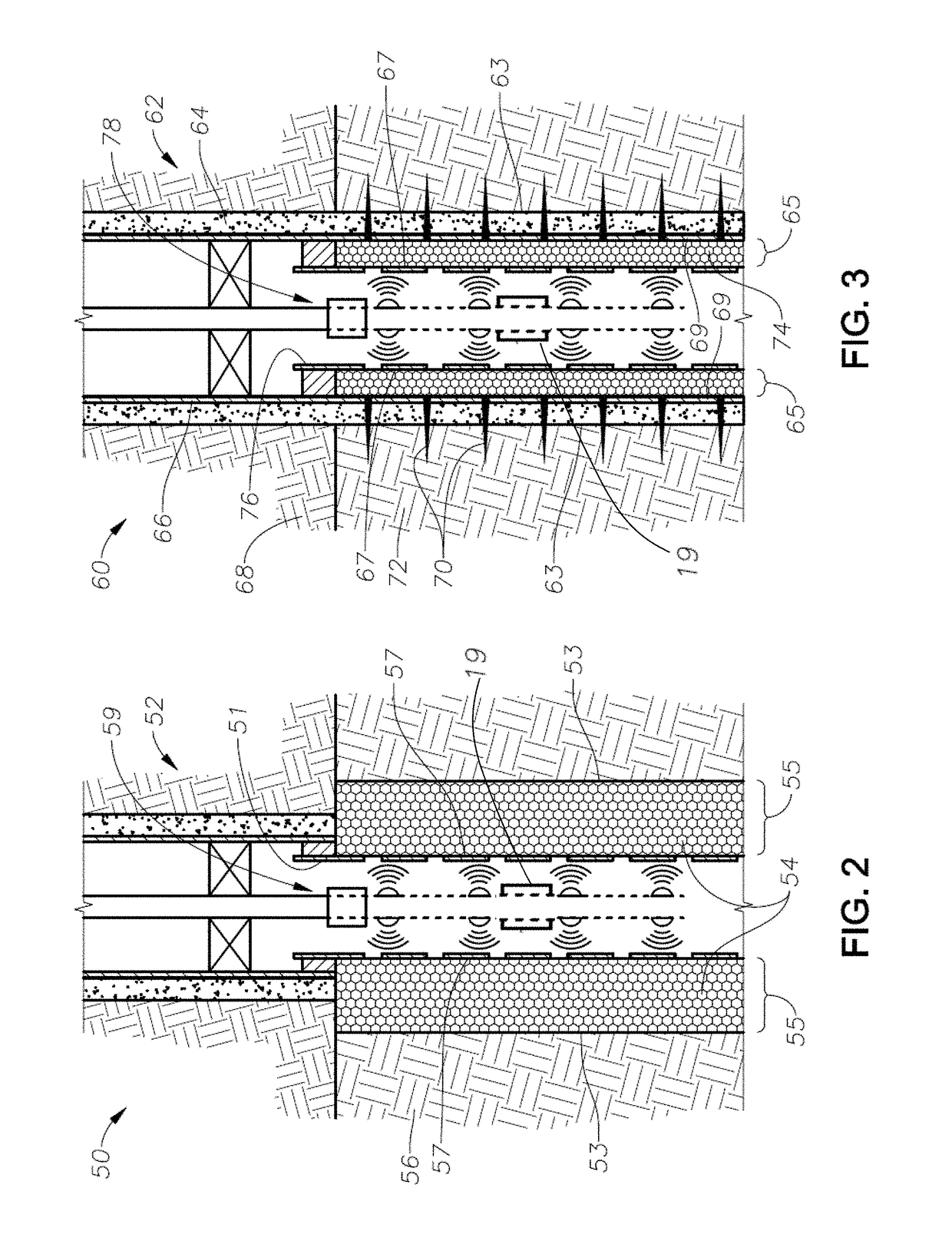System and method for condensate blockage removal with ceramic material and microwaves
a technology of ceramic material and condensate, which is applied in the field of operations in the wellbore, can solve the problems of near-wellbore formation damage (or blockage), accumulated liquids can impede the gas flow path from the reservoir towards the wellbore, and the well has to be abandoned, so as to prevent or reduce the accumulation of condensates, and improve the gas recovery
- Summary
- Abstract
- Description
- Claims
- Application Information
AI Technical Summary
Benefits of technology
Problems solved by technology
Method used
Image
Examples
Embodiment Construction
[0032]Shown in side sectional view in FIG. 1 is one embodiment of a microwave deliquification system 10. As shown, a hydrocarbon-bearing reservoir 12 includes a wellbore 14, which itself includes tubing 16, packer 18, a casing 20, and cement 22. The wellbore 14 proceeds through a cap rock 24 into the hydrocarbon-bearing reservoir 12. While in some embodiments the systems and methods of the present disclosure are used to reduce or remove condensates near the wellbore in a hydrocarbon-bearing reservoir by heating, the systems and methods can be used in other reservoir types for other applications. The systems and methods can be used for heating in oil reservoirs for heavy-oil and bitumen recovery with a single well process, also known as “huff-n-puff” (using steam injection), and for enhanced oil recovery displacement processes using multiple wells.
[0033]Still referring to FIG. 1, wellbore 14 further includes an open-hole liner 26, which proceeds downwardly into the wellbore 14 from t...
PUM
| Property | Measurement | Unit |
|---|---|---|
| temperature | aaaaa | aaaaa |
| temperature | aaaaa | aaaaa |
| temperature | aaaaa | aaaaa |
Abstract
Description
Claims
Application Information
 Login to View More
Login to View More - R&D
- Intellectual Property
- Life Sciences
- Materials
- Tech Scout
- Unparalleled Data Quality
- Higher Quality Content
- 60% Fewer Hallucinations
Browse by: Latest US Patents, China's latest patents, Technical Efficacy Thesaurus, Application Domain, Technology Topic, Popular Technical Reports.
© 2025 PatSnap. All rights reserved.Legal|Privacy policy|Modern Slavery Act Transparency Statement|Sitemap|About US| Contact US: help@patsnap.com



